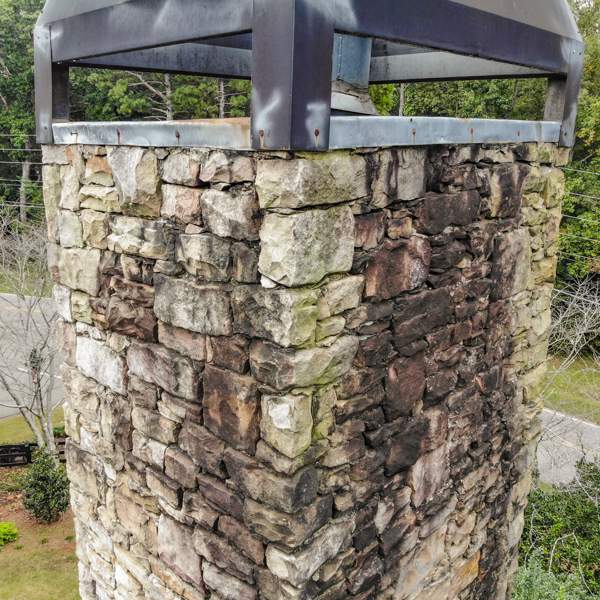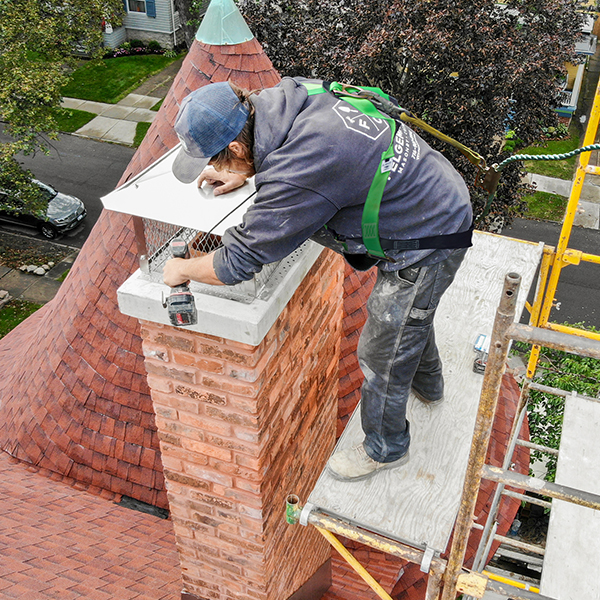Problems Damp Chimneys Can Cause
So, the winter freeze is over, and spring is on the way, but your chimney isn’t out of the woods just yet. Along with the warmer weather comes an increase in humidity. Unfortunately, many of our neighbors throughout northwest New York will have damp chimneys, especially in townships along the lakefront. While mold, mildew, and musty odors are expected, a damp chimney can cause several problems, including severe structural issues.
 Signs you may have a damp chimney:
Signs you may have a damp chimney:
Now, let’s look at some of the most common indicators that point to a damp chimney. Obviously, if you see water dripping in the fireplace or a puddle in the firebox, you know your chimney is damp. However, when you know where to look, there are less obvious but noticeable signs of a wet and leaky chimney.
Brick & Mortar Stains
Efflorescence or white stains on the masonry surface indicate that the bricks absorb moisture. Other types of colors, such as black, brown, yellow, or rust stains, indicate the likelihood of a more significant problem like a chimney leak that needs immediate attention. These stains can also occur around the chimney cap, chase cover, damper, and other metal components.
Moisture Intrusion
As mentioned earlier, moisture intrusion is a clear sign of a damp chimney. Carefully look for moisture stains around the chimney breast, the section of the interior masonry chimney above the fireplace that projects forward. It is especially problematic when you see water stains on the walls and ceiling around the fireplace or stove.
Masonry Decay
The brick-and-mortar will naturally decay with age. However, standing up to years of freezing and thawing conditions, lake-effect wind and snow, and summer heat can eventually cause the brick-and-mortar to crack, flake, and crumble, leaving gaps in the joints. So, if you see mortar eroding, chipped or missing bricks, it is a clear sign of a damp chimney that can lead to significant problems until repairs are made.
Partial Collapse
One of the most significant problems a damp chimney can cause is a partial collapse of the stack. It is dangerous for two reasons: someone can be hit when a ton of bricks start falling; it can cause extensive property damage, not to mention a partial chimney rebuild to save the rest of the structure.
 Chimney Crown Cracks
Chimney Crown Cracks
Since the chimney crown is the uppermost part of the chimney, it bears the brunt of most of the rain and snow. The wet soil from frequent rain or heavy snowfall can cause the foundation to shift just enough for a damp crown to crack or crumble. A full-width chimney cap or chase cover can help protect the crown from water damage.
How to Fix Damp Chimneys in Erie County, NY
If you suspect a damp chimney, scheduling a professional inspection is vital to prevent further moisture damage that can lead to a stack collapse. Call (716) 907-4914 or (585) 308-4914 to schedule a chimney inspection today! You can also contact us online toay.





